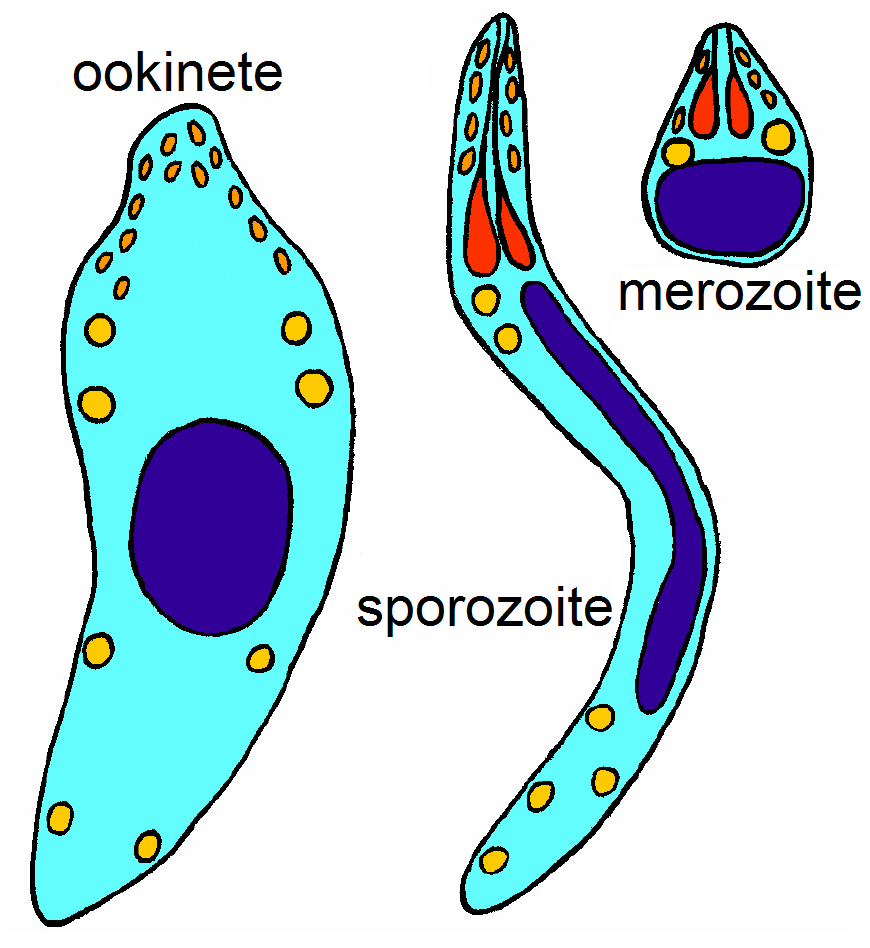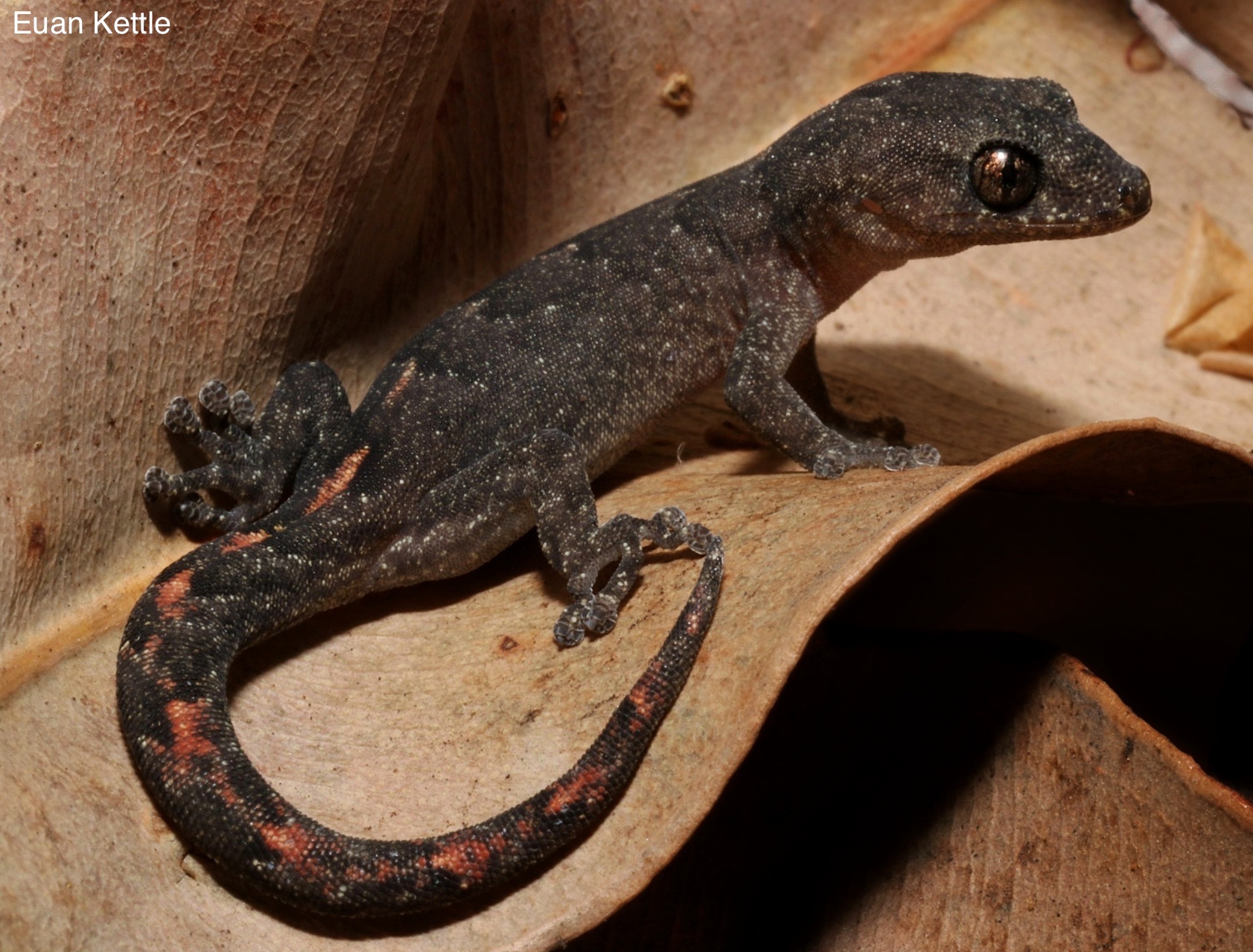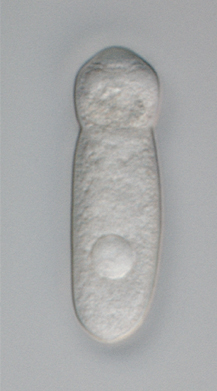|
Billbraya
''Billbraya'' is a genus of parasitic alveolates in the phylum Apicomplexia. It contains a single recognised species, ''Billbraya australis''. Description This genus was described in 1990 by Paperna and Landau. The genus is named after the parasiologist Robert ("Bill") Bray. While merogony mostly occurs in the erythrocytes (typically 2 parasites per cell and up to 95% infection rates) it may also occur in the monocytes. Gametocyte A gametocyte is a eukaryotic germ cell that divides by mitosis into other gametocytes or by meiosis into gametids during gametogenesis. Male gametocytes are called '' spermatocytes'', and female gametocytes are called ''oocytes''. Developmen ...s occur in the erythrocytes and may persist for months. Host range The only known host for this species is the marbled gecko ('' Phyllodactylus marmoratus''). Geographical range This parasite is found in Australia. References {{Taxonbar, from=Q4911772 Apicomplexa genera Haemosporida ... [...More Info...] [...Related Items...] OR: [Wikipedia] [Google] [Baidu] |
Genus
Genus ( plural genera ) is a taxonomic rank used in the biological classification of extant taxon, living and fossil organisms as well as Virus classification#ICTV classification, viruses. In the hierarchy of biological classification, genus comes above species and below family (taxonomy), family. In binomial nomenclature, the genus name forms the first part of the binomial species name for each species within the genus. :E.g. ''Panthera leo'' (lion) and ''Panthera onca'' (jaguar) are two species within the genus ''Panthera''. ''Panthera'' is a genus within the family Felidae. The composition of a genus is determined by taxonomy (biology), taxonomists. The standards for genus classification are not strictly codified, so different authorities often produce different classifications for genera. There are some general practices used, however, including the idea that a newly defined genus should fulfill these three criteria to be descriptively useful: # monophyly – all descendants ... [...More Info...] [...Related Items...] OR: [Wikipedia] [Google] [Baidu] |
Parasitic
Parasitism is a close relationship between species, where one organism, the parasite, lives on or inside another organism, the host, causing it some harm, and is adapted structurally to this way of life. The entomologist E. O. Wilson has characterised parasites as "predators that eat prey in units of less than one". Parasites include single-celled protozoans such as the agents of malaria, sleeping sickness, and amoebic dysentery; animals such as hookworms, lice, mosquitoes, and vampire bats; fungi such as honey fungus and the agents of ringworm; and plants such as mistletoe, dodder, and the broomrapes. There are six major parasitic strategies of exploitation of animal hosts, namely parasitic castration, directly transmitted parasitism (by contact), trophicallytransmitted parasitism (by being eaten), vector-transmitted parasitism, parasitoidism, and micropredation. One major axis of classification concerns invasiveness: an endoparasite lives inside the host's body; an e ... [...More Info...] [...Related Items...] OR: [Wikipedia] [Google] [Baidu] |
Phylum
In biology, a phylum (; plural: phyla) is a level of classification or taxonomic rank below kingdom and above class. Traditionally, in botany the term division has been used instead of phylum, although the International Code of Nomenclature for algae, fungi, and plants accepts the terms as equivalent. Depending on definitions, the animal kingdom Animalia contains about 31 phyla, the plant kingdom Plantae contains about 14 phyla, and the fungus kingdom Fungi contains about 8 phyla. Current research in phylogenetics is uncovering the relationships between phyla, which are contained in larger clades, like Ecdysozoa and Embryophyta. General description The term phylum was coined in 1866 by Ernst Haeckel from the Greek (, "race, stock"), related to (, "tribe, clan"). Haeckel noted that species constantly evolved into new species that seemed to retain few consistent features among themselves and therefore few features that distinguished them as a group ("a self-contained unity" ... [...More Info...] [...Related Items...] OR: [Wikipedia] [Google] [Baidu] |
Apicomplexia
The Apicomplexa (also called Apicomplexia) are a large phylum of parasitic Alveolata, alveolates. Most of them possess a unique form of organelle that comprises a type of non-photosynthetic plastid called an apicoplast, and an apical complex structure. The organelle is an adaptation that the apicomplexan applies in penetration of a host cell. The Apicomplexa are unicellular and spore-forming. All species are obligate parasite, obligate parasitism#types, endoparasites of animals, except ''Nephromyces'', a symbiosis, symbiont in marine animals, originally classified as a chytrid fungus. Motile structures such as flagellum, flagella or pseudopods are present only in certain gamete stages. The Apicomplexa are a diverse group that includes organisms such as the coccidia, gregarines, piroplasms, haemogregarines, and Plasmodiidae, plasmodia. Diseases caused by Apicomplexa include: * Babesiosis (''Babesia'') * Malaria (''Plasmodium'') * Cryptosporidiosis (''Cryptosporidium parvum'') * C ... [...More Info...] [...Related Items...] OR: [Wikipedia] [Google] [Baidu] |
Protozoal Merogony
Apicomplexans, a group of intracellular parasites, have life cycle stages that allow them to survive the wide variety of environments they are exposed to during their complex life cycle. Each stage in the life cycle of an apicomplexan organism is typified by a ''cellular variety'' with a distinct morphology and biochemistry. Not all apicomplexa develop all the following cellular varieties and division methods. This presentation is intended as an outline of a hypothetical generalised apicomplexan organism. Methods of asexual replication Apicomplexans (sporozoans) replicate via ways of multiple fission (also known as schizogony). These ways include , and , although the latter is sometimes referred to as schizogony, despite its general meaning. Merogony is an asexually reproductive process of apicomplexa. After infecting a host cell, a trophozoite ( see glossary below) increases in size while repeatedly replicating its nucleus and other organelles. During this process, the orga ... [...More Info...] [...Related Items...] OR: [Wikipedia] [Google] [Baidu] |
Erythrocyte
Red blood cells (RBCs), also referred to as red cells, red blood corpuscles (in humans or other animals not having nucleus in red blood cells), haematids, erythroid cells or erythrocytes (from Greek ''erythros'' for "red" and ''kytos'' for "hollow vessel", with ''-cyte'' translated as "cell" in modern usage), are the most common type of blood cell and the vertebrate's principal means of delivering oxygen (O2) to the body tissues—via blood flow through the circulatory system. RBCs take up oxygen in the lungs, or in fish the gills, and release it into tissues while squeezing through the body's capillaries. The cytoplasm of a red blood cell is rich in hemoglobin, an iron-containing biomolecule that can bind oxygen and is responsible for the red color of the cells and the blood. Each human red blood cell contains approximately 270 million hemoglobin molecules. The cell membrane is composed of proteins and lipids, and this structure provides properties essential for physiologi ... [...More Info...] [...Related Items...] OR: [Wikipedia] [Google] [Baidu] |
Monocyte
Monocytes are a type of leukocyte or white blood cell. They are the largest type of leukocyte in blood and can differentiate into macrophages and conventional dendritic cells. As a part of the vertebrate innate immune system monocytes also influence adaptive immune responses and exert tissue repair functions. There are at least three subclasses of monocytes in human blood based on their phenotypic receptors. Structure Monocytes are amoeboid in appearance, and have nongranulated cytoplasm. Thus they are classified as agranulocytes, although they might occasionally display some azurophil granules and/or vacuoles. With a diameter of 15–22 μm, monocytes are the largest cell type in peripheral blood. Monocytes are mononuclear cells and the ellipsoidal nucleus is often lobulated/indented, causing a bean-shaped or kidney-shaped appearance. Monocytes compose 2% to 10% of all leukocytes in the human body. Development Monocytes are produced by the bone marrow from precursors ca ... [...More Info...] [...Related Items...] OR: [Wikipedia] [Google] [Baidu] |
Gametocyte
A gametocyte is a eukaryotic germ cell that divides by mitosis into other gametocytes or by meiosis into gametids during gametogenesis. Male gametocytes are called ''spermatocytes'', and female gametocytes are called ''oocytes''. Development The development of gametogonia to primary gametocytes is called gametocytogenesis. The further development of primary gametocytes to secondary gametocytes is a part of gametidogenesis. Gametogenesis is the formation or production of gametes (taking place during meiosis). The development and maturation of sex cells also takes place during meiosis. Gametogenesis is also the process of formation in male and female gametes that occur in the gonads (ovary and testis). Both male and female produce gametes. Male gametocytes are called spermatocytes and female gametocytes are called oocytes. The term gametocyte is also used, for example, when talking about gametocytes of species like ''Plasmodium falciparum'' or ''Plasmodium vivax'', which transmi ... [...More Info...] [...Related Items...] OR: [Wikipedia] [Google] [Baidu] |
Phyllodactylus Marmoratus
''Christinus marmoratus'', also known as marbled gecko or southern marbled gecko, is a species of Gekkonidae (gecko) native to southern mainland of Australia, from Victoria to Western Australia. The species is well adapted to a variety of habitats, including city dwellings.''. Taxonomy The species was first formally described by John Edward Gray in 1845. The name he gave placed this group in the genus ''Diplodactylus'' as ''Diplodactylus marmoratus''. Gray's description was based on four specimens that were preserved in spirits. They were collected on the Abrolhos Islands (off Western Australia), and were donated to the British Museum from the collection of a "Mr. Gilbert". Gray examined another preserved specimen of ''D. marmoratus'' (from a different donor) which was discoloured, leading him to mistakenly describe it as a separate species (''Goniodactylus australis'') in the same publication. In 1885, George Boulenger placed ''D. marmoratus'' in the genus ''Phyllodactylus'' ( ... [...More Info...] [...Related Items...] OR: [Wikipedia] [Google] [Baidu] |
Apicomplexa Genera
The Apicomplexa (also called Apicomplexia) are a large phylum of parasitic alveolates. Most of them possess a unique form of organelle that comprises a type of non-photosynthetic plastid called an apicoplast, and an apical complex structure. The organelle is an adaptation that the apicomplexan applies in penetration of a host cell. The Apicomplexa are unicellular and spore-forming. All species are obligate endoparasites of animals, except '' Nephromyces'', a symbiont in marine animals, originally classified as a chytrid fungus. Motile structures such as flagella or pseudopods are present only in certain gamete stages. The Apicomplexa are a diverse group that includes organisms such as the coccidia, gregarines, piroplasms, haemogregarines, and plasmodia. Diseases caused by Apicomplexa include: * Babesiosis (''Babesia'') * Malaria (''Plasmodium'') * Cryptosporidiosis (''Cryptosporidium parvum'') * Cyclosporiasis (''Cyclospora cayetanensis'') * Cystoisosporiasis (''Cystoisospora ... [...More Info...] [...Related Items...] OR: [Wikipedia] [Google] [Baidu] |



.png)

